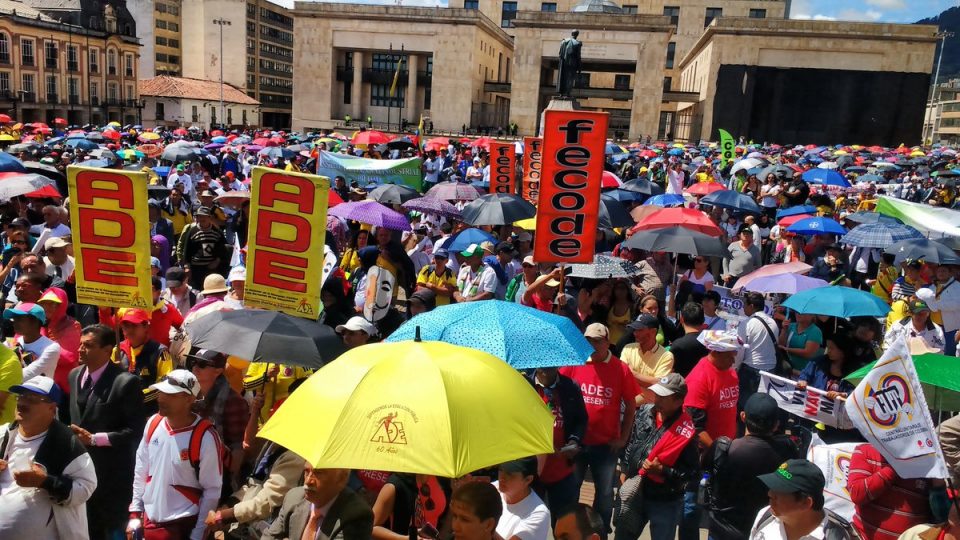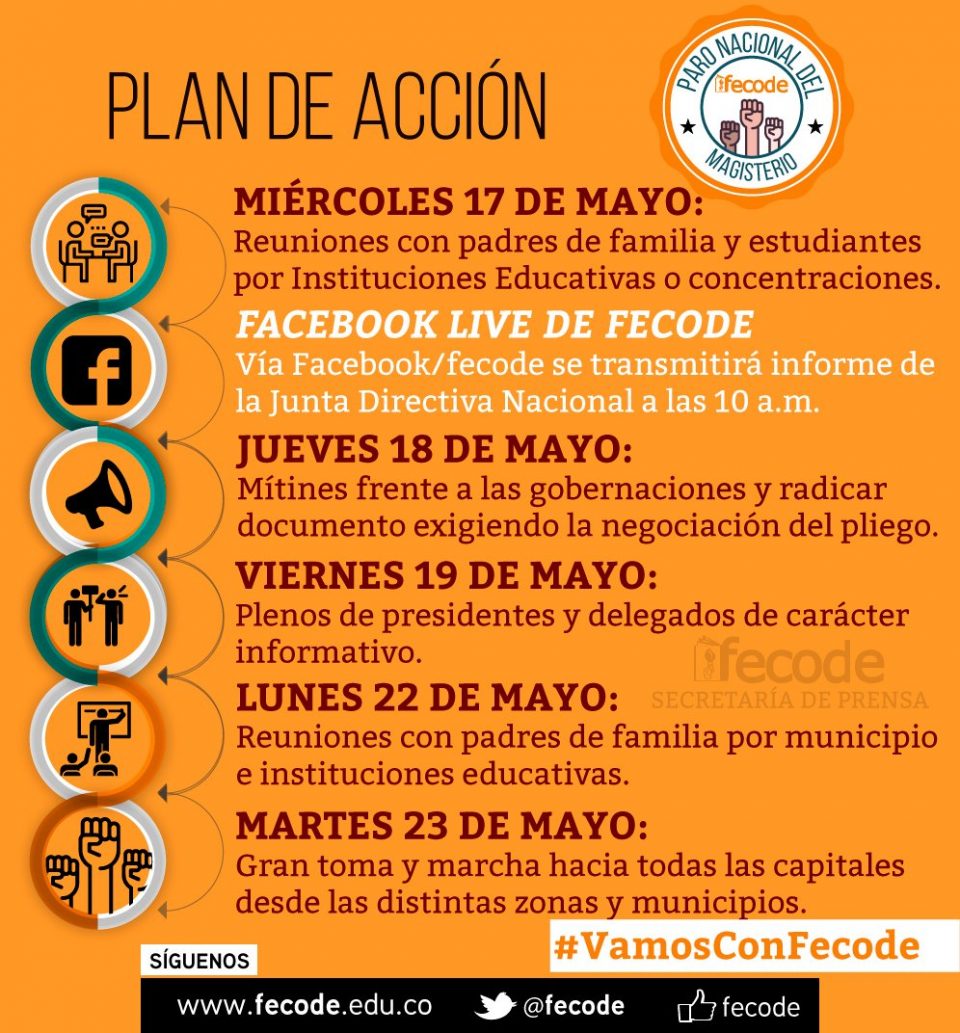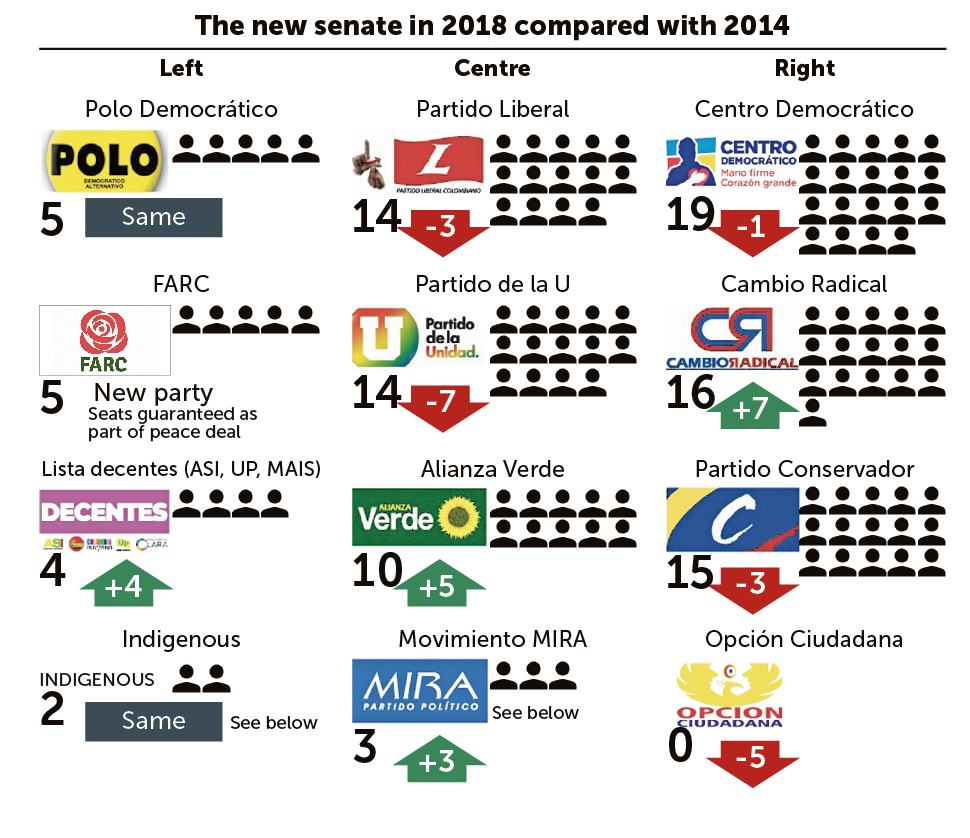
Thousands of people gathered in Plaza Bolívar to demonstrate in the continuing national teacher’s strike.
The teacher’s strike continues nationwide, with teachers demanding increased investment in education and complaining of un-teachable class sizes. As talks resume, Tajal Ahluwalia speaks to teachers about the protests.
The nationwide teacher’s strike reached a new level on May 16 when more than 350,000 teachers upped the ante with peaceful protests and demonstrations. In Bogotá over 60,000 teachers took to the streets in protests that brought the city traffic to a standstill and disrupted the public transport system.
The teachers have been on strike since May 11, demanding (amongst other things) an increase in the investment in educational infrastructure. Investment in public schooling was a key issue in last year’s teacher’s strike and the protesters claim it has still not been addressed by the government.
According to Carlos Rivas, president of teacher’s union Fecode, teachers are frustrated by the high number of students per teacher. “While the logic is that each teacher has up to 15 students, we have 35 or 45. So we can only take care of them, but not teach them,” Rivas said.
Some teachers are complaining that they have as many as 40 to 50 students in each class. One public school teacher said, “The idea is less students per teacher… 25 students per classroom, like it is in any other country, so that we can have a better quality education for the students.”
The teachers are calling for a better healthcare service, wage levelling and the fulfilment of the agreement that was reached last year.
The ministry of education have called on Fecode to reach a resolution and end the teacher’s strike as soon as possible. However, Rivas has tweeted a plan of action that continues until May 23.

Schedule of events.
Some progress was made on May 17 when Fecode returned to the negotiating table. The minister of education, Yaneth Giha Tovar personally visited the Fecode headquarters to deliver a letter from the President, inviting teachers to return to the talks.
“This strike started because of an economic issue, and so as a government, we hope that once we address those points, the strike can finish and the children can get back to class.” Giha said in an official statement.
The stalled talks opened on March 9 and had reached 11 agreements on education policy.
According to teachers, public schools lack the necessary resources that are required to work with students. In some cases the classrooms are not in good condition, there is no internet, and there are no proper laboratories.
Another major concern for schools are the school meals. The mandate from the government is that each student should be provided with two meals in a day. Decades of civil strife and widespread poverty have left Colombia with alarmingly high levels of child malnutrition. Over a third of all Colombian children are anaemic while some 14% of children under the age of five suffer from stunting, according to UNICEF.
The majority of the public schools are only able to provide one meal to the students due to low budget allocation. “The school provides only one meal in a day, the students have to pay for the second meal,” says another public school teacher in Mosquera, a town connected to Bogotá.
Teachers are hopeful that their demands will be met this year, ending their frustrations with the government. However, the disappointment from previous years teacher’s strikes still lingers and has further fuelled the animosity amongst the teachers and the government.
For now, the strikes and the talks continue, and the teachers of Colombia continue to chant, “Que vivan los profesores!”
By Tajal Ahluwalia





